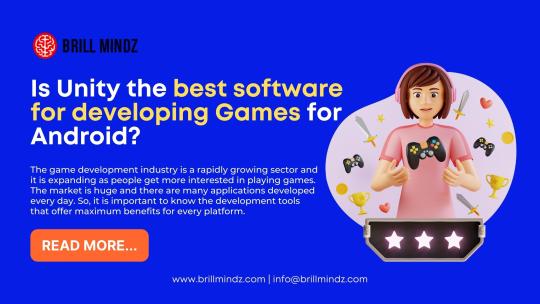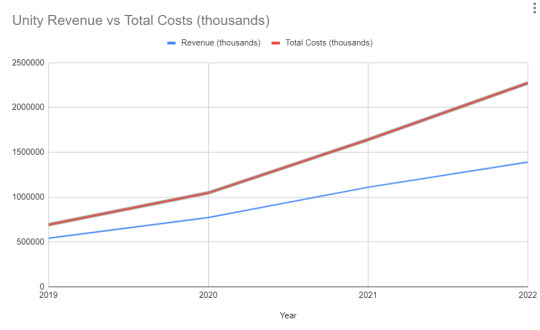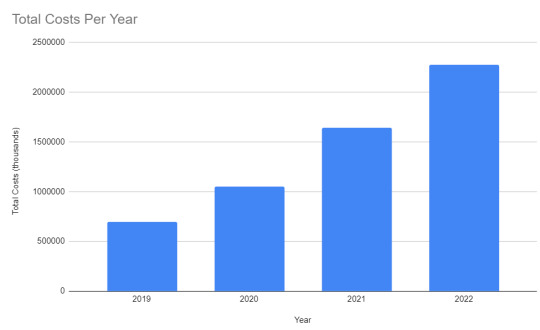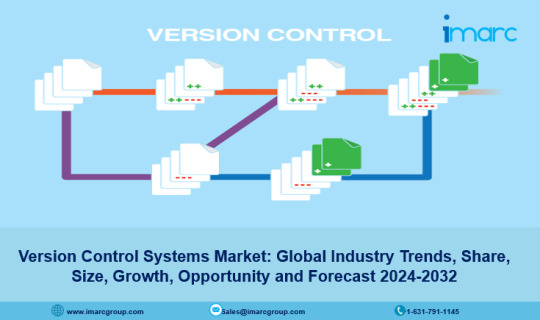#Unity Software Inc
Text
This is literally the Unity thing exactly:
youtube
20 notes
·
View notes
Text
Dear Unity,
What in the actual hell is wrong with you?!
Sincerely, Potato <3
4 notes
·
View notes
Text
Is Unity the best software for developing games for Android: Brill Mindz Technology
Introduction
The game development industry is a rapidly growing sector and it is expanding as people get more interested in playing games. The market is huge and there are many applications developed every day. So, it is important to know the development tools that offer maximum benefits for every platform.
A game development is a rapidly growing industry and there are many games developed daily. Games are developed for various platforms such as Android and iOS. Unity 3D is the best software for developing games and it allows you to create your own version of any game you want.

Read also: best Metaverse Development Companies in India
You should know that Unity is one of the best development tools available in the market today. It offers you the ability to develop games using its cross-platform system and publish them on various platforms, including Android.
The two most popular platforms for game development are Android and iOS. Android has a larger market share, but iOS is more popular with gamers.
Android is considered to be the best platform for mobile games because it's easier to develop for than other mobile operating systems like Windows Phone or Blackberry 10, which have a smaller user base than Android does. However, if you want your game to be played on consoles such as Xbox One and PlayStation 4 then you'll need either Unity Pro or MonoDevelop (which comes free with Unity).
For PC games, there are still some issues with performance on certain computers but this isn't too bad compared to console ports where performance can be affected by factors such as graphics card limitations etc., so bear that in mind when deciding whether or not it's worth investing time into porting your project overto another operating system. If you're not sure whether or not your game will perform well, then it's best to get this checked by beta testers first.
While there is a market for both platforms, Android has a significantly larger market share. It's estimated that around 80% of all smartphones in use today run on Android. This means that if you are going to create your game primarily for mobile devices and not PCs or consoles, then choosing Unity over Cocos2D would be more advantageous to you since it supports both platforms equally well.
The reasons may be due to the number of users who use Android-based smartphones or the operating system itself that allows developers to create games:
Android has a larger market share than iOS.
Android has more users than iOS.
Android is a more open operating system than iOS, which means it allows developers to create games without much difficulty.
Read also: E learning app development company in Chennai
If a developer wants to develop an application for multiple platforms, he will need a development tool that supports the same. Unity 3D is one of the best software for developing games, as it supports the development of games on multiple platforms. For example, if you want to create a game for Android platform and iOS platform then Unity can be used by developers because it has cross-platform capabilities.
Unity 3D is a cross-platform game engine that supports the development of games for Android, iOS and other platforms. It's also a good tool for developers who want to create games for multiple platforms at once. The main advantage of using Unity 3D is its ability to develop your game without having to learn anything about creating it from scratch, since you can use the same code base on all three platforms (iOS, Android and PC).
This means that if you already have an idea in mind but don't know how exactly how it should work out - then Unity 3D can help you solve this problem!
Unity3D is a cross-platform game engine. This means that you can use this software for creating games for Windows, Mac OS and Linux computers.
Unity3D is used by many developers in the world because of its powerful features and ease of use. It also has a lot of tutorials which help you learn how to use it on your computer or mobile device easily without any difficulty at all.
Unity 3D is one of the best tools available in the market today when it comes to developing cross-platform games. It supports all major platforms, including mobile devices and tablets.
Unity has been used to develop many different types of games including 2D and 3D titles for consoles, PC or even mobile devices such as Android phones or tablets.
Read also: Blockchain app development company in India
It's free to use for small projects (up to 100mb), but if you want more features then there are additional packages that can be purchased from within Unity itself by clicking on 'Buy Now' button after logging into your account through email address/password combination assigned by Brill Mindz Technology team member before starting any work on your project with Unity Editor toolset installed already (or installing them manually).
Conclusion
The market for games is growing at a fast pace, and Unity 3D offers a cross-platform solution that allows developers to create games for multiple platforms. However if you are looking for Top game development companies in india, look no further than Brill Mindz Technology. We have experienced over 11 years in the same industry. Contact us today and get free quotes from our experts.
Get in touch with us at, [email protected]
0 notes
Text
Twitter, Unity Software, Delta Air Lines and more
Twitter, Unity Software, Delta Air Lines and more
The logo and trading symbol for Twitter is displayed on a screen on the floor of the New York Stock Exchange (NYSE) in New York City, July 11, 2022.
Brendan McDermid | Reuters
Check out the companies making headlines in midday trading.
Unity Software — Shares tumbled 17.5% after the interactive software company announced a merger agreement with app software company ironSource in a $4.4 billion…

View On WordPress
#Advanced Micro Devices Inc.#Breaking News: Markets#business#business news#Delta Air Lines Inc#Devon Energy Corp#DigitalOcean Holdings Inc#economy#Fastenal Co#Gap Inc#Ironsource Ltd#Market Insider#Markets#Stitch Fix Inc#Stock markets#Twitter Inc#Unity Software Inc
0 notes
Text
Profit in Sight: Trading Signals & Strategy - 29 September 2023
Trading Signals 29 September 2023. Texas Instruments Incorporated, Apple, General motors, The Buckle, Boston Properties, Unity Software,
#GM #AZN #NFLX #SO #FB #D #NXST #PEP #VZ #KBH #RCL #UGI #PFE #RCL #CME #GBLE #FTI #RKT #TTD #PLTR #ETHUSD #OKE
Trading Signals 29 September 2023. Texas Instruments Incorporated, Apple, General motors, The Buckle, Boston Properties, Unity Software, Dominion Energy, Nexstar Media Group, Pepsico, Verizone, KB Home, Pfizer, Royal Caribbean Cruises Ltd trading, Global-E Online, TechnipFMC, Rocket Companies, UGI Corporation, The Trade Desk, Netflix, Meta Platforms. Palantir Technologies, Ethereum, ONEOK trading…

View On WordPress
#Double stop#ETHUSD#Meta Platforms#Netflix#Nexstar Media Group#ONEOK#Palantir Technologies#PepsiCo#Pepsico Inc#Rocket Companies#Royal Caribbean Cruises Ltd#TechnipFMC#The Southern Co#The Trade Desk#Trading signals#Trading strategy#UGI Corporation#Unity Software#Verizone
0 notes
Text
About Unity these past few days
A lot of people have asked me about Unity and their strange new per-install charges policy that they rolled out on September 12th, 2023. I wanted to give them at least 24 hours before I posted my take on it - let the dust settle a bit so I could get a chance to read the new policy properly and all that. First, however, I think we need to take a step back and get a wider perspective. Unity Software Inc. is in some serious financial trouble. Here are their operating numbers from 2019 to 2023.

The blue line here is how much money they take in and the red line is the amount of money they are spending each year. You may notice that they are spending significantly more money year over year than they earn. In fact, over the past 12 months alone (August 2022 to August 2023), Unity Software Inc. has lost almost $1 billion.

In 2022, Unity spent four times as much money as they did in 2019. If they had managed to keep costs at double their spending in 2019, they still would have earned $243 million in profit. Instead, they lost $882 million in 2022.
Where does all of this cost come from? In any software company like Unity, the vast vast majority of costs comes from employee salaries. And we can directly see it in Unity's number of employees:

Unity Software Inc. more than tripled its headcount from 2019 to 2022, and it did all of this hiring during the pandemic while competing with many many other developers all trying to hire from the same pool. I don't work for Unity, but I was in the market and I had lots of recruiters trying to recruit me during that time.

In short, Unity is suffering from the same miscalculation that Embracer Group did, that EA did, that Activision-Blizzard did, that Square-Enix did, and just about everybody else in the tech industry - they misjudged the good times at the beginning of the pandemic, overspent hiring people thinking the good times would last, and are now scrambling to figure out how to survive. The difference is that Unity was getting all of their operating money from Venture Capitalists (VCs) hoping that they would eventually become profitable, but VC money has all but dried up because it's become much more expensive to borrow money over the past two years.

As a result, the Unity executives are likely grasping at straws in hopes of saving a sinking ship. This wild and decidedly senseless pricing plan is their (seemingly-desperate) attempt to juice their revenues. It really makes very little sense from the developer perspective, which is what makes the whole thing reek of desperation. That isn't greed talking, it's survival. My guess is that Unity is currently desperately looking for a buyer to save them and doing whatever they can to buy themselves some more runway. They already announced layoffs back in May, but I suspect they'll probably have to announce some really big layoffs (e.g. 40-50%) soon. Unity Software Inc. is living on borrowed time and they know it.
[Join us on Discord] and/or [Support us on Patreon]
Got a burning question you want answered?
Short questions: Ask a Game Dev on Twitter
Long questions: Ask a Game Dev on Tumblr
Frequent Questions: The FAQ
#the business of video games#unity 3d#business business business#where the money goes#financial things
457 notes
·
View notes
Text
On September 6, 2023, John Riccitiello, President and CEO of Unity Software Inc (NYSE:U), sold 2,000 shares of the company. This move is part of a larger trend for the insider, who over the past year has sold a total of 50,610 shares and purchased none.
Unity Software Inc is a leading platform for creating and operating interactive, real-time 3D content. The company's platform provides a comprehensive set of software solutions to create, run and monetize interactive, real-time 2D and 3D content for mobile phones, tablets, PCs, consoles, and augmented and virtual reality devices.
The insider's recent sell-off raises questions about the company's current valuation and future prospects. To better understand this, we need to delve into the company's insider trading history and its relationship with the stock price.
The insider transaction history for Unity Software Inc shows a clear trend: over the past year, there have been 49 insider sells and no insider buys. This could be a red flag for potential investors, as it suggests that those with the most intimate knowledge of the company's operations and prospects are choosing to sell their shares.
1 note
·
View note
Text
1/25/23
Mukesh Ambani eyeing Thrive Capital stake
A group of global billionaires worth at least $123 billion are buying a stake in Thrive Capital, the venture-capital firm founded by Josh Kushner.
India’s Mukesh Ambani, Brazil’s Jorge Paulo Lemann and France’s Xavier Niel will join KKR & Co. co-founder Henry Kravis and Walt Disney Co. Chief Executive Officer Robert Iger in investing $175 million to purchase a 3.3% stake in Thrive.
“These extraordinary operators have built storied institutions, achieved geographic preeminence, ushered beloved brands to even greater heights, and pioneered entirely new industries,” Thrive said in a statement on Tuesday posted on Medium.
The deal values Thrive at $5.3 billion, up from $3.6 billion in 2021, when it sold a stake to a unit of Goldman Sachs Group Inc., according to a spokeswoman for New York-based Thrive. Its total assets under management reached $15 billion last year.
Thrive has repurchased the stake sold to Goldman Sachs and the stake held by the new syndicate is the same, Thrive said on Medium. The Wall Street Journal first reported details of the stake sale.
The investment represents a collection of some of the richest people from across the globe.
Ambani is the world’s 12th richest person, with a $84.7 billion fortune, according to the Bloomberg Billionaires Index. Lemann, with a net worth of $21.1 billion, is Brazil’s wealthiest individual. Kravis is worth $9.5 billion and Niel has an $8.1 billion personal fortune, according to the index.
“A lot of these folks have been involved in my life for quite a bit of time,” Kushner, 37, said in an interview with the Journal. “Now they actually have a vested stake in the firm’s success.”
Thrive was founded in 2009 by Kushner, the younger brother of Jared Kushner, the son-in-law of former President Donald Trump who served as a senior White House adviser under his administration.
It has invested in firms including Oscar Health Inc., Compass Inc., Affirm Holdings Inc., Opendoor Technologies Inc., Unity Software Inc., Hims & Hers Health Inc. and SKIMS, an underwear company created by Kim Kardashian.
3 notes
·
View notes
Text
Version Control Systems Market 2024 | Growth, Report, Demand and Forecast Till 2032

IMARC Group's report titled "Version Control Systems Market Report by Type (Centralized Version Control Systems (CVCS), Distributed Version Control Systems (DVCS)), Deployment Type (On-premises, Cloud-based), Enterprise Size (Large Enterprises, Small and Medium Enterprises), End Use (BFSI, Education, Healthcare and Life Sciences, IT and Telecom, Retail and CPG, and Others), and Region 2024-2032", offers a comprehensive analysis of the industry, which comprises insights on the global version control systems market report. The global market size reached US$ 739.9 Million in 2023. Looking forward, IMARC Group expects the market to reach US$ 1,525.4 Million by 2032, exhibiting a growth rate (CAGR) of 8.37% during 2024-2032.
For an in-depth analysis, you can refer sample copy of the report: https://www.imarcgroup.com/version-control-systems-market/requestsample
Factors Affecting the Growth of the Version Control Systems Industry:
Technological Advancements:
Modern version control system (VCS) solutions are equipped with features that enable developers to manage code more efficiently. This includes branching, merging, and conflict resolution tools that make collaboration smoother. In line with this, VCS incorporates continuous integration/continuous deployment (CI/CD) pipelines to enhance their utility. Furthermore, technological innovations benefit in providing real-time collaboration, enhanced visualization of code history, and improved user interfaces are outcomes. Additionally, advancements are making VCS more user-friendly, efficient, and adaptable to the ever-changing demands of modern software development.
Rising Remote Work Settings:
The escalating demand for VCS on account of the increasing remote work settings is contributing to the growth of the market. Apart from this, the rising need for seamless collaboration on software projects, as organizations are adapting to distributed work environments, is bolstering the market growth. Additionally, VCS systems enable geographically dispersed development teams to work together effectively by providing a centralized repository for code. VCS tools also facilitate version tracking, code sharing, and real-time updates, ensuring that team members can access and contribute to projects from anywhere in the world.
Increasing Focus on Open Source Solutions:
The rising focus on open source VCS due to their cost-effectiveness, flexibility, and robust feature sets is impelling the growth of the market. In addition, open-source solutions are accessible to enterprises of all sizes and cater to a wide range of development needs. Developers and organizations benefit from continuous improvements, bug fixes, and a wealth of documentation. This collaborative nature encourages innovation and ensures that open-source VCS tools remain competitive and up-to-date. Furthermore, open-source VCS solutions are platform-agnostic, allowing developers to work with different operating systems and development environments.
Leading Companies Operating in the Global Version Control Systems Industry:
Amazon.com Inc.
Atlassian Corporation Plc
GitHub Inc. (Microsoft Corporation)
International Business Machines Corporation
LogicalDOC
Luit Infotech
Micro Focus
Perforce Software Inc.
PTC Inc.
Unity Software Inc.
WANdisco plc.
Wildbit LLC
Version Control Systems Market Report Segmentation:
By Type:
Centralized Version Control Systems (CVCS)
Distributed Version Control Systems (DVCS)
Centralized version control systems (CVCS) represent the largest segment as they offer enhanced security and access control that is crucial for organizations with sensitive data.
By Deployment Type:
On-premises
Cloud-based
On-premises hold the biggest market share, which can be attributed to the rising focus on data security, control, and compliance.
By Enterprise Size:
Large Enterprises
Small and Medium Enterprises
Large enterprises account for the largest market share due to the growing need to manage complex codebases and ensure smooth collaboration.
By End Use:
BFSI
Education
Healthcare and Life Sciences
IT and Telecom
Retail and CPG
Others
IT and telecom exhibit a clear dominance in the market on account of the increasing complexity and scale of software projects.
Regional Insights:
North America: (United States, Canada)
Asia Pacific: (China, Japan, India, South Korea, Australia, Indonesia, Others)
Europe: (Germany, France, United Kingdom, Italy, Spain, Russia, Others)
Latin America: (Brazil, Mexico, Others)
Middle East and Africa
North America enjoys the leading position in the version control systems market, which can be accredited to the rising adoption of advanced technologies, such as cloud computing, artificial intelligence (AI), and machine learning (ML).
Global Version Control Systems Market Trends:
The escalating demand for VCS due to the increasing number of data breaches is propelling the growth of the market. In addition, organizations are focusing on code security and compliance. VCS systems provide features like access control, authentication, and audit trails, which are crucial for maintaining the integrity and security of code repositories. The rising adoption of development and operations (DevOps) methodologies in software development is impelling the market growth. Furthermore, VCS tools allow teams to manage code changes efficiently, automate testing, and ensure seamless collaboration among development, testing, and operations teams.
Note: If you need specific information that is not currently within the scope of the report, we will provide it to you as a part of the customization.
About Us:
IMARC Group is a leading market research company that offers management strategy and market research worldwide. We partner with clients in all sectors and regions to identify their highest-value opportunities, address their most critical challenges, and transform their businesses.
IMARCs information products include major market, scientific, economic and technological developments for business leaders in pharmaceutical, industrial, and high technology organizations. Market forecasts and industry analysis for biotechnology, advanced materials, pharmaceuticals, food and beverage, travel and tourism, nanotechnology and novel processing methods are at the top of the companys expertise.
Our offerings include comprehensive market intelligence in the form of research reports, production cost reports, feasibility studies, and consulting services. Our team, which includes experienced researchers and analysts from various industries, is dedicated to providing high-quality data and insights to our clientele, ranging from small and medium businesses to Fortune 1000 corporations.
Contact Us:
IMARC Group
134 N 4th St. Brooklyn, NY 11249, USA
Email: [email protected]
Tel No:(D) +91 120 433 0800
United States: +1-631-791-1145 | United Kingdom: +44-753-713-2163
0 notes
Text
Exploring the Metaverse: A Developer's Perspective on Virtual Worlds
In 1992, the term metaverse was devised by Neal Stephenson in his science fiction novel, Snow Crash. The book weaves Sumerian myth, virtual reality, and just about everything in between to bring an excellent thriller of the information age.
Facebook, Inc. was renamed Meta Platforms, Inc. on October 28, 2021. Instagram, WhatsApp, and Facebook keep their names, but the company that maintains and produces them has since been called Meta, a professional metaverse company.
What does Metaverse mean for developers?
Queries about the Metaverse app developer and its influence on software development abound. The major concern is whether it will be a controlled space or an open digital space.
Developing a metaverse app involves creating a gamified digital experience for platforms such as Oculus Quest, HTC Vive, and other VR systems. It also means constructing emerging digital worlds, such as Roblox or Fortnite. Metaverse game development services provide immersive virtual experiences.
In terms of developer tools, some of the prominent ones are Unity, Blender, Amazon Sumerian, Unreal Engine from Epic, and Autodesk's Maya.
In terms of influence, the advantage for creators is that the metaverse is widespread. No tech giant has control yet. After Facebook became Meta, it goes without saying that the digital platform would love to become a leading metaverse company.

The ecosystem will likely do so in the following years and has to mature. Presently, different initiatives are being implemented, such as Facebook's metaverse product group, Nvidia's Omniverse, and the metaverse stack of Microsoft.
1) Microsoft's Metaverse Stack
In 2023, Microsoft's CEO, Satya Nadella, talked about creating a new organizational stack amid the merger between the digital and the physical. He stated a metaverse stack that will help software creators build ample virtual models of anything physical or logical.
The remarkable part about the vision is that it mimics the actual world. Microsoft's, a metaverse company universe, will be based on the virtual twin concept, enabling the company to map and monitor real-world environments digitally.
In terms of tech stacks used, creators should expect cutting-edge machine learning technologies using Microsoft's Power Policy.
2) Nvidia's Omniverse
Nvidia, a renowned metaverse company launched in 2019, announced in 2021 its intentions to develop its Omniverse platform.
Also known as an open collaboration platform that streamlines workflows, Omniverse simplifies teamwork between engineers, allowing them to build better physical products by collaborating on virtual representations first.
Based on USD (Universal Scene Description), an open-source technology, USD has been labeled the HTML of 3D.
In simple terms, its goal for the future is to evolve to make the virtual world feel real and connect the open metaverse. Creators can influence the Omniverse Developer Resource Center to learn more about developing Omniverse extensions and microservices.
Various guidelines and a detailed kit are readily available to get started with emerging 3D scenes. Nvidia also emerged as a leading metaverse game development company that pioneers advanced technology for immersive gaming experiences.
For more information about Metaverse , contact us : https://www.acadereality.com/contact-us/
3) Facebook's Metaverse
As opposed to Microsoft and Nvidia, Facebook's metaverse is unclear. So far, the metaverse company has promoted two core products: Portal- a video-call device and
Oculus – which can teleport individuals into a different room, irrespective of distance.
A major concern is related to connection tissue, a language that is similar to Facebook's social graph. In December 2021, the company launched Horizon Worlds, a VR-based world of avatars, at the same time stating that they will spend $10 billion by the end of 2022 to continue to expand and improve its metaverse and develop the tech stacks.
Software designers interested in learning more about metaverse development can now test tech stacks from Microsoft or Nvidia. There are other open-source stages they can try out, such as Open Metaverse OS or Mozilla Hubs.
Irrespective of their choice, there's no doubt that the prospect of web development is a 3D form of the internet.
Understanding the metaverse by studying developers
Organizations selling, creating and entering in the metaverse will profit enormously from how the challenges impacting developers will ultimately have repercussions and understanding their perspective.
Presently, three particular issues stand out:
I. The demand to prioritize time with the metaverse developer community over concentrating on algorithms;
Ii. The rising anti-Zuckerberg sentiment felt by entertainers that will affect the development of the metaverse; and
Iii. The constant calls for superior accountability as keeping track of the blockchain changes — as do the movements of wallet watchers.
Business can learn how to build up their relationship with metaverse creators, produce better metaverse content and experiences, and overcome hurdles that would otherwise negotiate long-term ROI.
Wrapping up
For businesses pursuing growth into the metaverse, creators should not be thought of as digital world freelance labor or construction workers.
Organizations should view metaverse designers as companions in a revenue-focused venture. By doing so, those creators will add even better returns if their concerns are talked about.
Whether it be providing additional team members or tools to oversee changes that make a substantial difference, considering the preferences regarding larger players in the space, or prioritizing time, acknowledging the problems preventing a developer's success will confirm the building process is in line with cost-revenue expectations, efficient, faster, and eventually resulting in a greater experience for users.
The metaverse remains an infinite source of business potential and possibility. Like most facets of a business, installing accurate individuals and removing their issues will be vital in getting the most out of a company's metaverse examination.
#acadereality#animationservices#metaverse#metaverseservices#metaversedevelopment#metaversetechnology#metaversegames
0 notes
Text
Despite Music Industry Growth, Companies Are Tightening
Lucas Shaw, writing for Bloomberg:
Last year was brutal for the media business, as nearly every major entertainment and technology company fired employees. This year is shaping up to be more of the same.
More than a dozen major corporations across technology, finance and media announced major job cuts this past week, including Amazon.com Inc., Alphabet Inc. and Unity Software Inc. Universal Music Group, the world’s largest music company, plans cuts in the first quarter. Animation studio Pixar will let staff go in the second half. All told, media companies have fired more than 70,000 employees since the start of last year, according to Vivek Couto at Media Partners Asia.
---
Please consider becoming a member so we can keep bringing you stories like this one.
◎ https://chorus.fm/linked/despite-music-industry-growth-companies-are-tightening/
0 notes
Text
Game Engines Market: Unveiling Opportunities and Challenges
The global game engines market size is anticipated to reach USD 8,261.6 million by 2030, exhibiting a CAGR of 17.4% over the forecast period, according to a new report by Grand View Research, Inc. The growth of the market for game engines can be attributed to several factors, including the increasing demand for mobile games, the rise of virtual and augmented reality technologies, and the growing popularity of esports.

Game Engines Market Report Highlights
The solution component segment accounted for the highest revenue share of over 70.0% in 2022, due to the ease of development of high-quality games using game engines. Solution components like plugins and asset packs can help developers save time and resources by utilizing pre-made tools and assets for game development
The 3D game engine segment is expected to register the fastest CAGR from 2023 to 2030. The growth is attributed to the increasing popularity of 3D games, which provide players with immersive and engaging experiences and are becoming more popular among gamers of all ages
Based on genre, the action & adventure games segment accounted for the highest revenue share in 2022, and is poised to expand at a CAGR of 16.1% during the forecast period. The rise in trend of smartphone-based gaming among end-users is anticipated to propel the growth of the segment
Asia Pacific is expected to expand at the highest CAGR of 18.4% over the forecast period, owing to the region's large and rapidly expanding population of gamers
For More Details or Sample Copy please visit link @: Game Engines Market Report
Game engines are also becoming more accessible and easier to use, allowing developers of all skill levels to create high-quality games and interactive experiences. The market is also witnessing the emergence of innovative game engines, including Unreal Engine 5 and Amazon Lumberyard, which are expected to further drive industry growth. The increasing adoption of game engines across various industries, including education, healthcare, and advertising, is expected to continue the rapid growth of the market during the forecast period.
The increasing popularity of mobile gaming drives the market growth of game engines. With the sustained rise in popularity of smartphones and tablets, mobile gaming has become more accessible than ever, increasing demand for games that can be played on the go. Platforms like Unity and Unreal Engine have been able to capitalize on this trend by providing developers with tools and resources to create high-quality mobile games quickly and efficiently.
The primary advantage of using game engines for mobile game development is the ability to create games for multiple platforms. Companies offer support for a range of platforms, including iOS, Android, console, and PC. This allows developers to create games once and deploy them to multiple platforms, saving time and resources. The rapid growth in popularity of the eSports industry is also driving market demand, with esports having millions of players & viewers globally. As it continues to grow, companies like Unity and Unreal Engine are becoming more crucial for creating high-quality games that can be played competitively.
Game engines offer features such as real-time physics simulation and network optimization, which ensure smooth and responsive gameplay in online multiplayer matches. Besides providing tools for game development, these platforms are used to create specialized tools and software for eSports. For example, Unity has launched Unity for eSports, a set of tools and services designed specifically for the industry. The platform offers features like match management, player profiles, and live streaming integration, making it easier for organizers to manage and broadcast eSports events.
The accessibility of this platform is another factor contributing to the market growth. In the past, game development was a highly technical and time-consuming process that required significant expertise. Nowadays, game engines have become more user-friendly with drag-and-drop interfaces, pre-built assets, and tutorials, making it easier for developers of all skill levels to create games. This accessibility has allowed more developers to enter the market, leading to an explosion in the number of games being created.
#Game Engines Market#Gaming Technology#Virtual Reality Gaming#Interactive Gaming#Digital Entertainment#Gaming Innovation#Next Gen-Gaming#Gaming Tech Trends#Code Crafting#Immersive Gaming#Gaming Development#Tech In Gaming#Virtual Worlds#Digital Simulation#GameDev Tools#Realistic Gaming#Interactive Experiences#Gaming Industry Insights#Digital Gaming Revolution#Future of Gaming Tech
1 note
·
View note
Text
Nav Sooch Marriage | CodeCraft - The Fusion of Software and Silicon in Modern Devices
In the rapidly evolving landscape of contemporary technology, Nav Sooch, an iconic figure in this domain, has demonstrated how the fusion of software and silicon acts as a transformative force, revolutionizing the functionality and capabilities of our electronic devices. This exquisite collaboration, often seen as a symbiosis of creativity and technology, is fundamental to the optimization, advancement, and evolution of our gadgets. The impact of this intricate alliance is far-reaching, encompassing everything from home appliances to sophisticated industrial machinery, underlining the profound influence of Sooch's vision on our tech-driven world.
His business acumen is best exemplified by his success in founding and leading Silicon Labs. Since its inception in 1996, Silicon Labs has consistently pushed the boundaries of innovation in the tech industry. Under Sooch's strategic vision and leadership, the company has carved a unique niche for itself, pioneering in the integration of software and silicon. His stewardship was instrumental during the company's crucial growth years, demonstrating his ability to navigate challenging business landscapes. Furthermore, his role as CEO of Ketra, Inc., where he steered the private company towards groundbreaking achievements in solid state lighting, underscored his unparalleled entrepreneurial spirit and keen understanding of technological progress.
The pivotal role of Nav Sooch in this arena cannot be overstated. His profound understanding of software and hardware interactions cultivated an environment of unprecedented innovation and collaboration. It is within this framework that software developers and hardware engineers do not merely coexist but work in unity to push the boundaries of what is technologically achievable. This delicate balance, a symbiosis between intricate lines of code and the raw power of silicon, manifests itself in the complex design and efficiency of our digital devices. It is this dance, choreographed under Sooch's leadership, that has profoundly shaped our digital experiences.
Indeed, the fusion of the digital and tangible realms is an ongoing process that influences almost every aspect of human life. The intersectionality of these two spheres has revolutionized the way we communicate, work, learn, and entertain ourselves. For instance, the rise of smart homes, powered by Internet of Things (IoT) technologies, has transformed our living spaces into highly responsive environments that anticipate and cater to our needs. Everything from lighting and heating systems to refrigerators and washing machines can now be controlled remotely, offering unprecedented convenience and efficiency. Nav Sooch Marriage
Moreover, AI technologies have transcended the realm of science fiction to become an integral part of business operations, healthcare, education, and more. This isn't merely a technological advancement; it's a paradigm shift that's reshaping the socio-economic fabric of our society. Such advancements are empowering people, enhancing productivity, and paving the way for a future where digital integration is seamless and all-encompassing. Each step forward in this journey brings us closer to a world where the digital and physical domains are not just intertwined but are essentially indistinguishable.
At the forefront of this technological revolution stands Nav Sooch, a visionary whose contributions have significantly influenced the field. The amalgamation of intricate code and silicon, a specialty of his, breathes life into Artificial Intelligence (AI). This integration is pivotal, shaping the creation of advanced neural networks and sophisticated machine learning algorithms. Engrained within the silicon architecture, these algorithms equip devices with the capability to learn, adapt, and evolve, heralding an innovative era of intelligent and responsive technologies. This transformative union of silicon and code metamorphoses AI from a mere theoretical construct into a tangible force, revolutionizing the way we interact with our technological environment.
In the realm of cybersecurity, beyond the user experience, the joint endeavor between software and silicon bears a significant role. As our devices grow increasingly networked, this synergy becomes even more pivotal. The alliance between software developers and hardware experts, a collaboration epitomized by individuals like Nav Sooch, forms the robust foundation of secure digital ecosystems. This dynamic blend, referred to as Code Craft, serves as the fortress that ensures the data contained within these interconnected devices remains impervious to the ever-advancing array of cyber threats. This protective approach, rooted in hardware-software collaboration, is an absolute necessity in today's rapidly evolving digital landscape.
The impact of this collaboration extends beyond the consumer sphere into various industries. In the realm of autonomous vehicles, for instance, the fusion of software and silicon is essential for real-time processing capabilities. The algorithms embedded in silicon chips guide self-driving cars, promising safer and more efficient transportation. Similarly, in the healthcare sector, this collaboration contributes to the development of personalized medicine and advanced diagnostic tools, ultimately leading to more accurate diagnoses and tailored treatment plans.
Indeed, the progressive advancement of this synergistic initiative introduces its unique assortment of hurdles. The escalating intricacy of contemporary apparatuses necessitates a finely tuned equilibrium between pioneering developments and uniformity. Devising software that takes full advantage of silicon's capabilities, whilst simultaneously remaining flexible to the ceaseless progression of hardware configurations, is a persistent quandary faced by software developers and engineers.
This constant balancing act between pushing the boundaries of what is technically feasible and ensuring that the resulting code is still applicable and efficient, regardless of the rate of hardware evolution, underpins the complexities of this field. This situation presents a panorama where innovation is not just about invention and originality, but also about adaptability and the capacity to foresee and keep pace with a future that is always in flux.
The truly remarkable technological progress we witness today, particularly the collaborative synergy between software and silicon, stands as a testament to digital pioneers like Nav Sooch. This creative partnership is an invisible force that meticulously shapes our digital experiences, from the seamless operation of our smartphones to the complex systems that govern our smart homes. As we look to the future, this intertwined relationship between software and silicon, fostered by visionaries such as Sooch, continues to push the boundaries and redefine what is technologically possible. It is this very collaboration that we can anticipate will usher in a new era of innovation, transcending our expectations and reshaping our digital world in ways we are just beginning to imagine.
0 notes
Text
Bragar Eagel & Squire, P.C. Is Investigating Novartis,
Bragar Eagel & Squire, P.C. Is Investigating Novartis,
NEW YORK, July 04, 2022 (GLOBE NEWSWIRE) — Bragar Eagel & Squire, P.C., a nationally recognized shareholder rights law firm, is investigating potential claims against Novartis AG (NYSE: NVS), Unity Software, Inc. (NYSE: U), Gap, Inc. (NYSE: GPS), and Cassava Sciences, Inc. (NASDAQ: SAVA). Our investigations concern whether these companies have violated the federal securities laws and/or engaged…

View On WordPress
#Bragar Eagel & Squire#Cassava#class action#Gap#investigation#investor#lawsuit#lawyer#litigation#Novartis#securities#share#stock#stockholder rights#Unity
5 notes
·
View notes
Text
It’s enshittification all the way down
If you don’t know about Cory Doctorow’s “Enshittification of the Internet” hypothesis… please go read
In this follow up mini essay, I’m going to talk quickly about the non-news that a major TTRPG brand is working ever closer to enshittification of TTRPGs.
The Dragon Wants to Enshittify Itself
(there was no Chik-fil-A)
For a long time That Dragon Game has been showing ways it will present enshittification as helpfulness for a while.
You can see enshittification as the culmination of this demotivational from Despair Inc.

If you're not part of the solution, good money can be made [renting an approximation of a solution]
This is how I see the enshittification of lots of things happening. Companies don't want to SOLVE your problem, they want to rent you an approximation of that solution. The posterchildren of this method is the Adobe Suite and Microsoft 365 (note: other corporate software has done this for aaaaaaaages but these two are big obvious examples you've likely brushed up against, and also Hello Unity! How you doin with your Enshittification???)
How do I make this claim? The long arc of That Dragon Game trying to enshittify iteslf.
Back in the dim recesses of the 90s, That Dragon Game made a version of itself so wildly needlessly complicated that they decided to make it easier by including software on a CD to do the job for you. You could make up to Level 3 characters with it, and yeah it had some issues but they didn't try make their game easier to handle just potentially sell you a tool to manage it.
Not part of the solution, prolonging the problem for profit... eTools for 3.5EDragon Game was prolonging a design problem for profit.
Then after the Dragon had crapped all over its loot pile with 2 trillion splat books in the early 00s, the Dragon decided that it needed a new cave to put a loot horde and started on 4E.
Enter the murder of Melissa Batten. Wizards had hired Joseph Batten to head up Gleemax: a project to basically create a TTRPG Social Media site. (which boy oh boy sounds like another great place for enshittification... please see Cory's analysis of TikTok, Facebook, Twitter, etc...) A lot of this project came to a screeching halt when Joseph Batten lost the plot, decided to murder Melissa (who worked a Microsoft and was clearly better than him at a lot of stuff)... but at the same time those resources were put into Insider.
What is this Insider you speak of?
Hasbro told every department "Make at least this many boats of cash or fuck off to the wilderness" in slightly more 'investor speak'. So Wizards had to think of a way to suddenly make more cash. The solution? Insider.
Insider was going to be:
- a source of new material
- a VTT
- a marketplace
- a 'place to organise games with strangers'
- etc...
and you would pay a subscription for it.
Is any of this ringing any bells?
This was during the 4E incarnation of The Dragon Game. In the dim heady days of the mid 00s. A whole marriage ago for this Halfling (my marriage can nearly drive in some jurisdictions! Woot! I am old...)
As far back as 2008 Wizards have been looking for ways to make subscription versions of its stuff. The Enshittification has been happening on a loooooong arc.
But Halfling, that isn't what is happening now...

How does Beyond work?
You pay a subscription to have it, you then pay for additional content on it, you can't get your stuff off it, you have to use the thing... wait, isn't this exactly what Melon Husk is trying to do with X?
Beyond enshittified TTRPG.
DMGuild is another aspect of that enshittification.
But why are you talking about this now Halfling? Why this topic now?
Well, it's making the rounds of many game design spaces that Wizbros have ended their distribution and publishing deal with Penguin Random House... sure, Wizbros likely have all sorts of options for printing/publishing/distribution. But on top of this it seems set up to make it hard for small retailers: the stores where a lot of people buy their TTRPG products. Why cut off their major advocates by doing this? To wall up the garden tighter and make it easier to enshittify the scenery more.
I don't see this as 'Wizbros scouring for a better distribution publishing deal' but a deliberate move to try enshittify things more.
#wizbros are enshittifying the bed#ttrpg enshittification has been happening for ages#cory doctorow#enshittification#ttrpg#ttrpg design
0 notes
Text
Unity overhauls controversial price hike after game developers revolt
video-game tool maker Unity Software Inc. said Monday it’s backtracking on major aspects of a controversial new price hike, telling staff in an all-hands meeting that it’s now considering changes including a cap on potential fees.
Unity, which operates and licenses a suite of video-game development tools called the Unity Engine, set off a firestorm last week when it announced plans to charge customers for every new installation of their game after a certain threshold. The decision triggered widespread protests, leading several video-game makers to say they would boycott Unity until the policy is changed.
Under the tentative new plan, Unity will limit fees to 4 per cent of a game’s revenue for customers making over US$1 million and said that installations counted toward reaching the threshold won’t be retroactive, according to recording of the meeting reviewed by Bloomberg. Last week, Chief Executive Officer John Riccitiello delayed an all-hands meeting on the pricing changes and closed two offices after the company received what it said was a credible death threat.
The company apologized to customers on Sunday and said it would be making changes to the pricing policy.
Marc Whitten, a Unity executive, said the company hasn’t yet announced the latest changes because executives are still running them by partners and don’t want to repeat last week’s communications debacle, which led to several clarifications.
One of the most controversial elements of the policy concerned how Unity would track installations of its software. Although the company first said it would use proprietary tools, Whitten said Monday management will rely on users to self-report the data.
In the meeting, Riccitiello emphasized that the new policy is designed to generate more revenue from the company's biggest customers and that more than 90 per cent of Unity users won’t be affected. Several employees asked during the meeting how Unity would bounce back from what appeared to be a breach of trust. Executives said the company will have to “show, not tell” and handle future communications more carefully.
“I don’t think there’s any version of this that would have gone down a whole lot differently than what happened,” Riccitiello said. “It is a massively transformational change to our business model.”
But, he acknowledged, “I think we could have done a lot of things a lot better.”
#unity#pc games#nintendo#microsoft#steam games#sony#xbox series x#xbox one#ps5#ps4#switch#nintendo switch#unity engine
1 note
·
View note